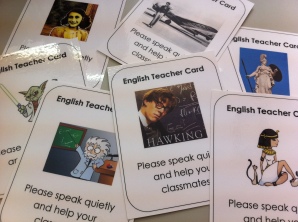Amp Up Student Involvement
Creating a supportive learning environment means the teacher needs to support his or her students, right? Actually, it’s wrong—an important component is missing from this model: Student Involvement
In any classroom, some students will always find learning activities to be routine, boring, or formulaic and will be motivated to finish work as quickly as possible. When they are finished and other students are chugging along, these students sleep, talk, or do work for other classes. A teacher’s initial response may be to ignore or bother sleeping students, feel good about studious students, and become upset about students who choose to talk. Often, I’ve seen my teachers give out endless rounds of worksheets in hope to keep all the students busy.
Many students who learn in the mode of the teacher’s choice at a slower pace feel overloaded and become distracted and concerned. Perhaps these worksheets really aren’t serving them. Students who fly through worksheets, on the other hand, don’t feel challenged by more work.
In this classroom formula, who is supporting the slower-paced students? Who is supporting the faster paced students?
I’d like to pose the possibility that nobody is supporting either student. It’s the teacher’s responsibility to see that students are challenged and provided guidance, and the cool this is that the deliverer of the support can actually be another student.
An Alternative: What is Cooperative Learning?
Cooperative learning is a teaching method in which small groups, each with students of different levels of ability, use a variety of learning activities to improve their understanding and skill.
Read more about cooperative learning strategies here.
How Cooperative Learning Can Look
Instead of thinking, “Well, if the student finishes early, they want to use the time to study by themselves,” we should think, “If a student finishes early, their new responsibility should be to support their classmates and teach the content which they just learned.” Give them a job. Make it official. I made the cards you see to the right and when I bring them out, some of my students get excited and gain confidence and students with weak interpersonal skills decide that instead of finishing early they will keep working and challenge themselves to improve their own work.
In reality, self-study is inherently selfish. Through contact with others can we can put our studies to immediate use.
Additionally, it is proven by research that teaching material reinforces the knowledge and application within the teacher’s mind, not only the learners. Requiring students to help each other changes the classroom from a selfish place to a place where students selflessly support each other.
How can you, as an ALT, guide your students towards selfless actions?
This entry was posted on January 9, 2013 by Terry Dassow